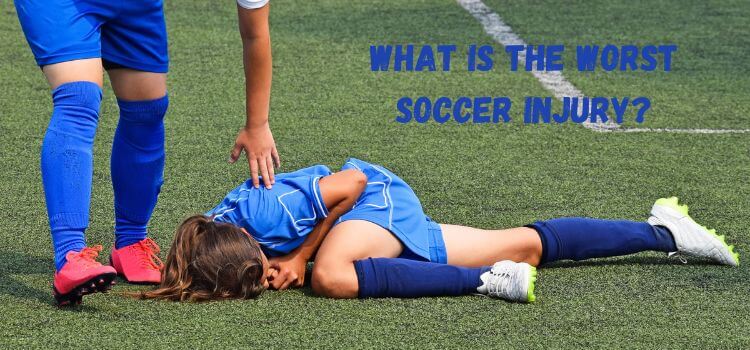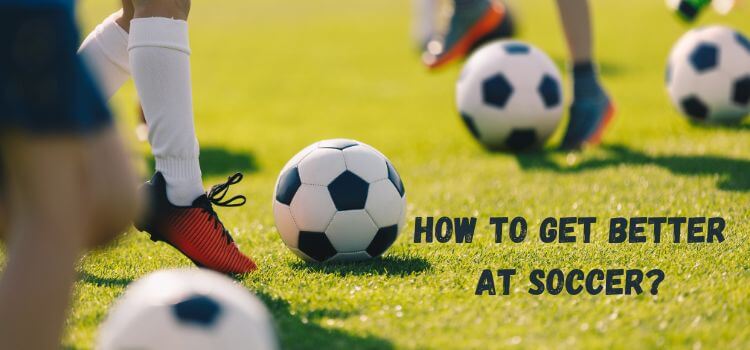As an Amazon Associate, I earn from qualifying purchases
Soccer, undoubtedly one of the most beloved sports worldwide, is not without its risks. Every player, from amateur enthusiasts to professional athletes, understands the potential for injury on the field. However, among the myriad of injuries that can occur, one question often looms large in the minds of players and spectators alike: What is the worst soccer injury?
Soccer injuries are inherent, ranging from minor bruises to severe, life-altering conditions. This article delves into soccer injuries, exploring their types, severity, and the worst cases in the sport’s history.

Delving into sports medicine and athlete experiences, we uncover the gravity of soccer injuries, their implications on players’ careers, and the arduous recovery journey.
Understanding Soccer Injuries
Soccer injuries can vary in nature and severity. Players are susceptible to various injuries, from muscle strains to fractures. The most common types include sprains, strains, fractures, and dislocations. These injuries often occur due to collisions, falls, or overexertion during gameplay.
Common Types of Soccer Injuries
Sprains:
Ligament injuries are prevalent, especially in the ankles and knees.
Strains:
Muscles can experience tears or stretching, leading to strain injuries.
Fractures:
Bones can break due to high impact or awkward falls.
Dislocations:
Joints can become displaced, causing immense pain and discomfort.
Severity Levels
Injuries in soccer can range from minor nuisances to career-ending disasters. The severity often depends on factors like impact force, player fitness, and the area affected.
While some injuries require simple first aid, others demand immediate medical attention and long-term rehabilitation.
The Worst Soccer Injuries in History
Throughout soccer’s history, several injuries have horrified players and fans. These injuries affect the players physically and negatively impact their mental well-being.
Head Injuries
Head injuries are among the most feared in soccer. Concussions, skull fractures, and brain trauma can occur due to collisions, falls, or being struck by the ball. These injuries pose serious risks, including cognitive impairment and long-term neurological damage.
Leg Injuries
Leg injuries are common in soccer, ranging from minor muscle strains to severe fractures. A torn ACL (anterior cruciate ligament) or a broken leg can sideline a player for months, affecting their performance and career trajectory.
Spinal Injuries
Spinal injuries are rare but catastrophic in soccer. A severe impact on the spine can result in paralysis or even death. Proper medical attention and spinal stabilization are crucial to prevent further damage.
Neck Injuries
Neck injuries, although less common, can be debilitating. Damage to the cervical spine can lead to paralysis or loss of motor function. Immediate immobilization and transportation to a medical facility are vital in managing neck injuries.
Impact on Players
Soccer injuries affect players physically and affect their mental and emotional well-being. The fear of re-injury, the pressure to perform, and the uncertainty of recovery can lead to anxiety and depression.
Physical Effects
Injuries can limit a player’s mobility, agility, and overall performance. Chronic pain and discomfort may persist even after the injury has healed, affecting the player’s ability to play at their best.
Psychological Effects
The psychological impact of injuries can be profound. Players may experience feelings of frustration, anger, or helplessness during the recovery process. Support from coaches, teammates, and mental health professionals is crucial in navigating these emotional challenges.
Prevention Measures
While some injuries are unavoidable, many can be prevented through proper precautions and training techniques.
Protective Gear
Wearing appropriate protective gear, such as shin guards and ankle braces, can reduce the risk of injury during gameplay. Goalkeepers should also wear padded gloves and helmets to protect themselves from impact injuries.
Training Techniques
Strength training, flexibility exercises, and proper warm-up routines can enhance player resilience and reduce the likelihood of injuries. Coaches should emphasize safe playing techniques and educate players about injury prevention strategies.
Recovery Process
Recovering from a soccer injury requires patience, perseverance, and professional guidance.
Rehabilitation
Physical therapy and rehabilitation programs restore mobility and strength after an injury. A tailored recovery plan, supervised by trained professionals, can expedite the healing process and minimize the risk of re-injury.
Mental Health Support
In addition to physical rehabilitation, players may require emotional support during their recovery journey. Counseling, mindfulness practices, and peer support groups can help players cope with the psychological challenges of injury rehabilitation.
Famous Cases
Several high-profile soccer players have experienced devastating injuries throughout their careers.
Ronaldo’s Knee Injury
In 1999, Brazilian striker Ronaldo suffered a career-threatening knee injury that required multiple surgeries and extensive rehabilitation. Despite the setback, he eventually returned to the pitch and excelled in the sport.
Eduardo da Silva’s Leg Injury
In 2008, Arsenal forward Eduardo da Silva suffered a horrific leg injury that left him with a broken fibula and dislocated ankle. The injury sidelined him for over a year but did not dampen his determination to return to professional soccer.
Conclusion
Soccer injuries can profoundly impact players’ lives, both physically and mentally. While some injuries are unavoidable, preventive measures and proper rehabilitation can help minimize their occurrence and severity. By prioritizing player safety and well-being, the soccer community can ensure that the beautiful game remains enjoyable.
Frequently Asked Questions (FAQs)
With proper rehabilitation and determination, many players can regain their form and resume playing at a high level.
Coaches should teach proper technique, implement effective warm-up routines, and monitor players for signs of fatigue or overexertion.
Yes, exercises targeting the core, lower body, and stabilizing muscles can help reduce the risk of common soccer injuries.
A balanced diet rich in nutrients supports muscle repair, maintains energy levels, and reduces inflammation during recovery.
Open communication with coaches and medical professionals, gradual reintroduction to gameplay, and focusing on positive experiences can help players overcome their fear of re-injury.
Read Our More Articles
- How to Get Better at Soccer: Strategies for Success
- Why Soccer is Better Than Football How to Understand
- Is Baseball Better than Soccer? A Comprehensive Guide
As an Amazon Associate, I earn from qualifying purchases


